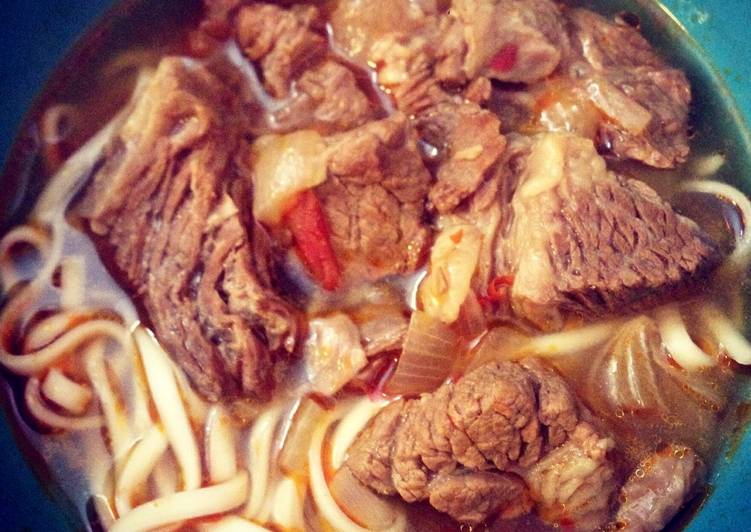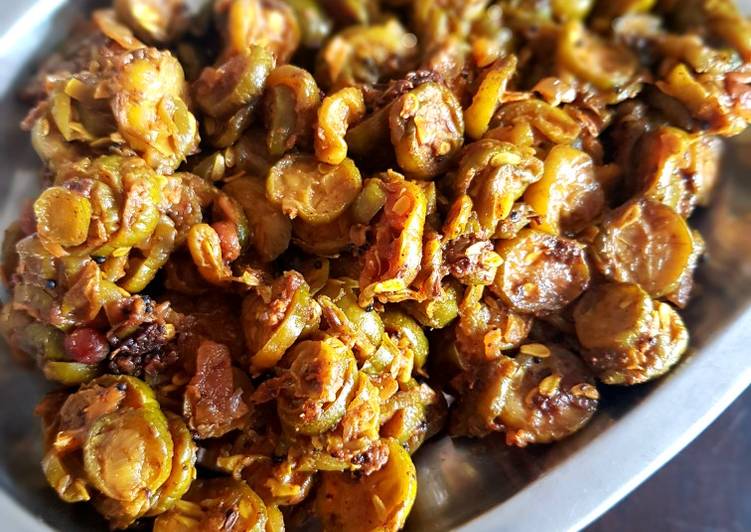
Hello everybody, it is Louise, welcome to our recipe page. Today, I’m gonna show you how to prepare a special dish, taiwanese braised beef noodle soup. One of my favorites. This time, I am going to make it a bit unique. This is gonna smell and look delicious.
Taiwanese Braised Beef Noodle Soup is one of the most favored of current trending foods on earth. It is easy, it’s fast, it tastes delicious. It’s enjoyed by millions daily. They are nice and they look fantastic. Taiwanese Braised Beef Noodle Soup is something that I’ve loved my whole life.
Remove the bay leaves and star anise before serving. Bring a large pot of water to boil over high heat and cook the flour noodles according to the package instructions. Then cook some noodles (Any type of noodles will go well with that delicious braised beef.
To begin with this recipe, we have to prepare a few components. You can have taiwanese braised beef noodle soup using 14 ingredients and 7 steps. Here is how you can achieve that.
The ingredients needed to make Taiwanese Braised Beef Noodle Soup:
- Prepare 2.5 kg boneless beef finger ribs
- Make ready 1 medium onion
- Take 1 red chili
- Get 5 cloves garlic
- Prepare 8 slices peeled ginger
- Prepare 2 stalks green onion
- Prepare 1 medium tomato
- Get 1 bag seasoning for stewing 滷包 (star anise, clove, cinnamon, and nutmeg)
- Prepare 2 tbsp spicy chilli bean paste
- Get 1 spoon soy sauce
- Take 1 spoon rice wine
- Take Some pepper powder for seasoning
- Make ready Some cooking oil (vegetable oil or canola oil works fine)
- Make ready Noodles to serve
Place noodles, bok choy and beef in bowls, pour over hot broth, adding more water to taste if necessary. The craves for Taiwan Beef Noodle Soup was real when I was spending my time as a private chef in Taiwan. Due to my cravings, I decided to go Red Braised Beef Noodle is Taiwanese dish created during the civil war era in the Kaohsiung area. There is variety of beef noodle around the world and.
Steps to make Taiwanese Braised Beef Noodle Soup:
- Cut the beef into cubes of about 5 cm. I have also used different types of beef to make the beef noodles as finger ribs are not always available. I have used stewing beef (too lean and falls apart) and also beef flank (too fatty) before.
- Slice the onions, chop the chilli and green onions into smaller segments, slice the garlic and ginger, and chop the tomato.
- Heat up some water to blanch the cubes of beef.
- Boil just enough water to cover the beef in another pot with half of the green onion and ginger, and bag of seasoning. After boiling, place the cubes of beef into the pot and add the rice wine. Boil for about 3 minutes, take the beef out and set aside. Keep the remaining liquid and its contents.
- Warm up some oil in a wok and stir fry the onions, chilli, garlic, tomatoes, and the rest of the green onions and ginger. Then add the spicy chilli bean paste and the blanched beef from the previous step. Mix well.
- Add the remaining liquid and its contents from step 4 to the wok followed by soy sauce and pepper powder, boil, and simmer with lid on low heat for 2.5 hours. You can also use a pressure cooker to shorten the cooking time.
- Serve with cooked noodles.
The beef soup for the noodles is the same as the stock the beef is braised in. All kinds of good stuff go into the stock pot: onions, star anise, garlic, ginger, bay leaves, chilies, spring onions and shallots. And then each chef will have their own special spin on the perfect beef soup, maybe adding a bit of. This Taiwanese beef noodle soup will surely make your tummy rumble with its umami-rich soup base and nearly melt in the mouth braised beef. The hunger-inducing aroma is the result of the intermingling of a variety of Asian spices, aromatics, and herbs.
So that’s going to wrap it up with this special food taiwanese braised beef noodle soup recipe. Thank you very much for reading. I’m confident you can make this at home. There’s gonna be more interesting food at home recipes coming up. Don’t forget to bookmark this page in your browser, and share it to your family, colleague and friends. Thank you for reading. Go on get cooking!


